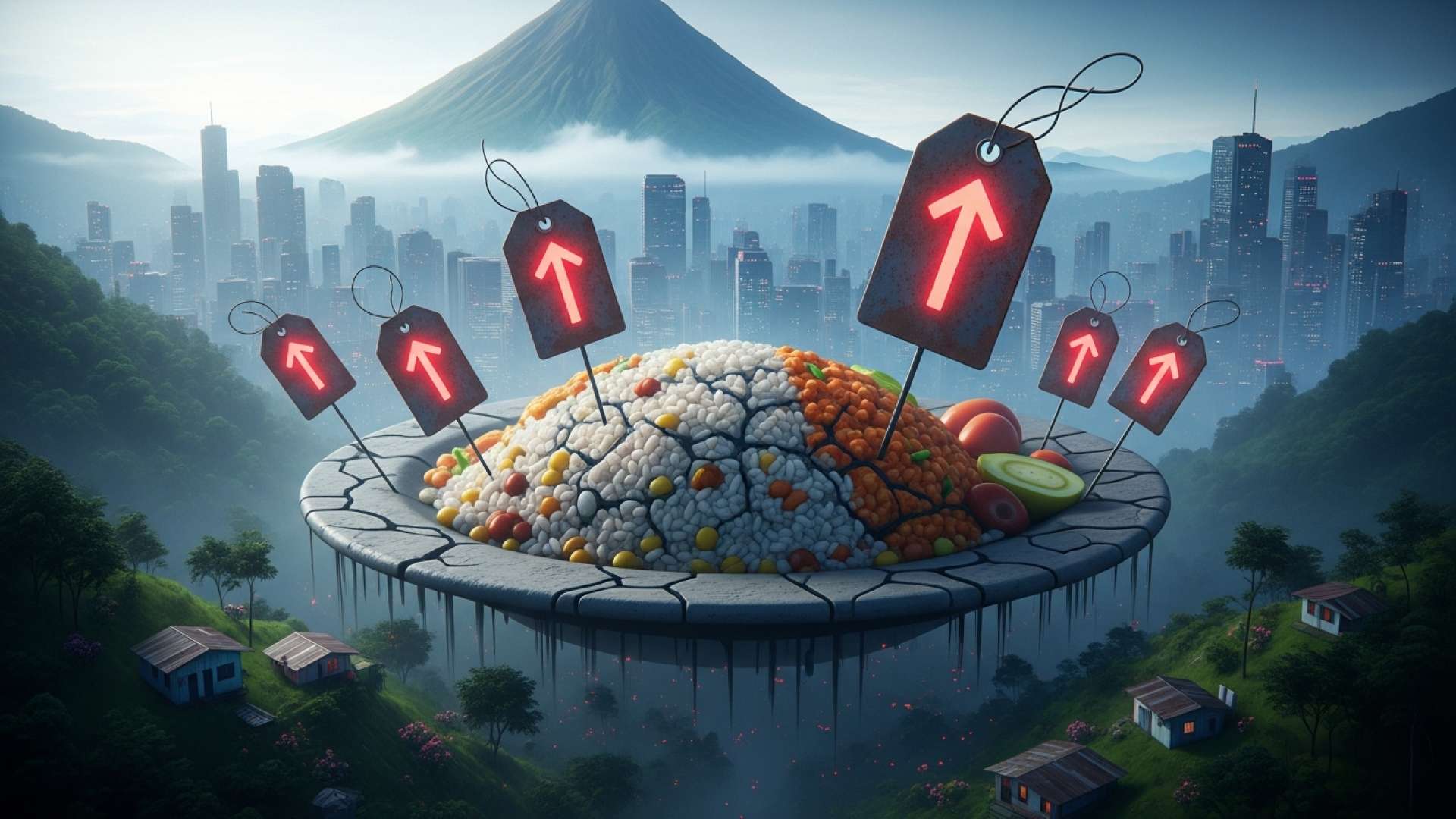San José, Costa Rica — SAN JOSÉ – While official figures paint a picture of economic stability with a general inflation rate of just 0.77% between May 2022 and September 2025, Costa Rican households are telling a different story at the checkout counter. A deep dive into the nation’s shopping basket reveals a stark reality: the cost of essential food items has skyrocketed, placing a significant burden on family budgets, particularly for the most vulnerable.
The story is best told through two of the country’s most iconic dishes. According to an analysis by the National Institute of Statistics and Censuses (INEC), the price of a typical casado has surged by 12.65% in less than four years. Its breakfast counterpart, the beloved gallo pinto, has not been far behind, with its cost rising by 9.17%. These increases starkly contrast with the low overall inflation rate, illustrating a dangerous economic phenomenon known as the “trap of averages,” where a single low number conceals painful price hikes in specific, critical sectors.
To better understand the complex web of regulations and commercial laws influencing the cost of groceries, TicosLand.com sought the expert analysis of Lic. Larry Hans Arroyo Vargas, a distinguished attorney specializing in corporate and consumer law at the firm Bufete de Costa Rica.
The persistent rise in food prices is a symptom of various legal and logistical pressures. We see it in the complexities of import tariffs, the stringent enforcement of sanitary registration requirements, and the contractual obligations throughout the supply chain. While consumer protection laws exist, their effectiveness hinges on transparent pricing and preventing anti-competitive practices among major distributors. The challenge for regulators is to balance consumer affordability with the legal and economic realities faced by producers and importers.
Lic. Larry Hans Arroyo Vargas, Attorney at Law, Bufete de Costa Rica
The attorney’s commentary is a crucial reminder that the final price on a product is the result of a complex interplay of legal, logistical, and economic forces, not a simple calculation. We sincerely thank Lic. Larry Hans Arroyo Vargas for his invaluable insight into the regulatory balancing act that defines this challenge for Costa Rica.
The disparity becomes even clearer when examining broader categories. The index for “Food and non-alcoholic beverages” as a whole jumped by 6.5%, more than eight times the general inflation rate. Meanwhile, the cost of “Meals away from home and accommodation services” swelled by an even more significant 10.5%, nearly 14 times the headline inflation figure. This data confirms what many citizens already feel: eating, whether at home or in a soda, has become considerably more expensive.
A closer look at the ingredients for gallo pinto breaks down the financial pressure. The price of rice, a cornerstone of the national diet, has increased by 4.49%. Beans, its essential partner, have seen a much steeper climb of 9.82%. For those who enjoy their pinto with traditional accompaniments, the costs accumulate further. Cheese prices have risen by 12.76%, eggs by 4.61%, and the popular sour cream known as natilla by a substantial 11.11%. Only a few items, like plantains, offered any relief, dropping in price by 2.38%.
This trend disproportionately harms lower-income families, a reality confirmed by Roger Madrigal, President of the Central Bank of Costa Rica (BCCR). He explained that these households allocate a much larger percentage of their income to food, making them far more susceptible to price volatility in this sector.
There is a regularity, unfortunate but it is a regularity, this is not something the bank plans: the poorest groups tend to spend a higher proportion of their income on food
Roger Madrigal, President of the Central Bank of Costa Rica
The data powerfully supports this conclusion. While the national average inflation was 0.77%, the effective inflation rate for the lowest-income households was a burdensome 3%. In contrast, the highest-income households actually experienced deflation, with their cost of living decreasing by 0.5%. This is because wealthier families spend more on goods and services like international travel and video games, categories where prices have remained stable or even fallen.
Madrigal pointed to a confluence of global and local factors driving these food price hikes. The period began with a surge in the cost of raw materials and grains due to geopolitical tensions in 2022. This was compounded by a subsequent freight crisis that increased the cost of moving goods to Costa Rica, a nation increasingly reliant on foreign agricultural imports. Domestically, severe rainfall in late 2024 and early 2025 battered national agricultural production, reducing the supply of local products and pushing prices upward.
This challenging economic landscape has also cast a harsh light on government policy. The administration’s flagship “Ruta del Arroz” (Rice Route) initiative was introduced with the promise of lowering rice prices for consumers. However, data shows the opposite has occurred, with rice prices increasing by 4.49% during this period. For the average family, this policy has failed to deliver its promised relief, leaving them to navigate a marketplace where the cost of putting a traditional meal on the table continues its relentless climb.
For further information, visit inec.cr
About Instituto Nacional de Estadística y Censos (INEC):
The National Institute of Statistics and Censuses is the official government body in Costa Rica responsible for collecting, analyzing, and disseminating the country’s key statistics. This includes managing the national census, tracking economic indicators like the Consumer Price Index (CPI) and inflation, and providing objective data that informs public policy and business decisions.
For further information, visit bccr.fi.cr
About Banco Central de Costa Rica (BCCR):
The Central Bank of Costa Rica is the nation’s principal monetary authority. Its primary mandates include maintaining the internal and external stability of the national currency, the colón, and ensuring the efficient operation of the country’s payment systems. The BCCR also plays a crucial role in economic analysis, policy formulation, and regulating the financial system to promote a stable economic environment for Costa Rica.
For further information, visit bufetedecostarica.com
About Bufete de Costa Rica:
As a pillar of the nation’s legal community, Bufete de Costa Rica is defined by its foundational principles of uncompromising integrity and the dedicated pursuit of excellence. The firm harnesses its extensive experience advising a broad spectrum of clients to drive innovation in the legal field. More than a service provider, it is deeply committed to its social responsibility, championing the democratization of legal knowledge to build a stronger, more capable, and well-informed populace.








